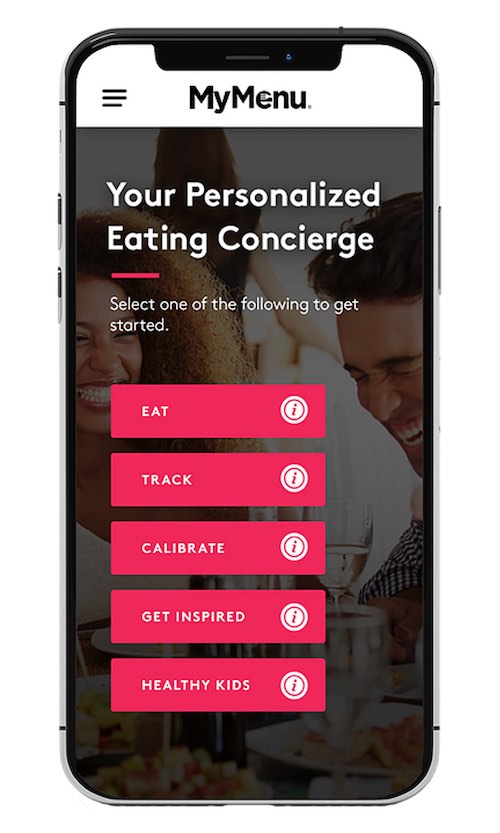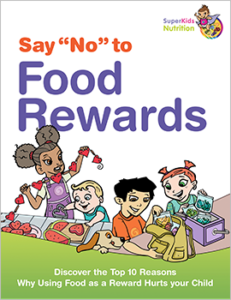
Super Kids Nutrition had the opportunity to speak with nutrition educator, Super Kids Nutrition Advisory member and writer Christen Cooper, MS, RD based in Pleasantville, New York. We spoke with her about her approach to establishing kids’ healthy eating habits, increasing fruit and veggie intake, and creating a healthy home environment.
How can parents overcome environmental barriers to create healthy eating habits?
Parents often misjudge how smart kids are and their ability to read messages. When you see advertisements or signs for junk food, explain to kids that some foods have lots of sugar, fat and salt and not much that helps your body grow strong and healthy. I tell my kids that there are companies that want to sell us foods that will make us sick, but we don’t have to buy those foods—we have a choice. We can buy nutrient-rich whole grains, fruits and vegetables instead. I explain that we have to keep our bodies healthy because no one can do that for us.
As a mother and health expert, what are 5 easy steps parents can take to create a healthy home environment?
- Allow a treat once a day for dessert and make everything else you serve healthy. Make exceptions on truly special occasions (birthday parties, holidays, etc.)
- Keep fruits and vegetables in the house. Serve at least one fruit or one vegetable at every meal. Make fruit and vegetables visually appealing and your kids will eat more produce. Even if kids do not eat them, they realize that they are part of a healthy meal.
- Have patience with kids in terms of trying new foods. The average child will reject a food eight to 12 times (sometimes 20 times!) before trying it. Let kids move at their own pace. If the foods are on the plate, they are likely to eventually try them, but they can’t try them if you don’t give them the chance.
- Take your children to the supermarket. Point out the sections that contain the healthiest foods and let them choose a new fruit, vegetable, or grain by themselves. Also point out the sections of the market that contain mainly junk foods. Have them try All the Colors of the Super Market they haven’t tried before then check out our grocery store tool kit for kids and parents.
- Get involved in your child’s school meal program or wellness committee. The schools that serve the healthiest food have the most active and watchful parents. Schools need your knowledge on food in order to improve what they serve to your kids.
Many schools are adapting more hands-on curriculum that includes cooking and gardening in the classroom. What does this curriculum offer children and how does it influence their eating habits?
Studies show that children learn more when they partake in hands-on learning in a caring educational environment when it comes to learning about food and nutrition. This is especially true when they get to taste and see the fruits of their labor. The home kitchen can serve as the ultimate classroom. Start cooking easy meals together and gardening as a family.
What challenges do you face when developing nutrition education and healthy lunch ideas in a school district and parents are skeptical about them?
Whenever you visit a school district with a population of individuals who are not like you in some way (background, socio-economic level, religion, race, etc.), learn as much as you can about your audience before suggesting anything. You want to make suggestions to a group only when you understand their likes and dislikes for different foods. It is also important to find out what foods are available in their neighborhood. For example, you may want to find out what a popular dish is among students at a school that is predominantly Latino (say it’s chicken, beans and rice). You could talk about baking and not frying the chicken, about preparing the rice with less oil and salt, and making the beans without adding lard. You wouldn’t want to encourage this population to eat hummus and baby carrots if there is no place to buy them in their neighborhood. Start with what people are familiar with and work from there.
Can you offer 3 ways parents can teach their kids about nutrition that will encourage life-long healthy eating habits?
- Teach kids that food is necessary for health, but it is also a pleasure in life. Everything in moderation, even moderation itself is the key to success.
- Eat plenty of fruits, vegetables, beans, and whole grains. It’s really the animal foods that we have to limit—not only for the health of the body, but the health of the Earth as well.
- Never feel like you have to eat everything on your plate. Eat until you feel full, and then put your fork down. Eat because you feel hunger and not because you feel lonely, bored or sad.
What are the top 3 environmental factors that affect children’s food choices?
- Billboards, signs, and television advertisements for fast/junk foods.
- The choices of other kids at school.
- The fact that junk food is cheaper than healthful food and fast food tastes good to kids (probably because they don’t know what’s in it!) It tastes good, but, of course, it’s not good for you.
A focus of your writing includes premature bone loss. What 3 tips can you give parents to increase their children’s bone density and create strong bones? Why is important for parents to think about this now?
Bone health is important because, for women, peak bone mass forms around age 30. Beyond age 30, most women start losing bone mass. Men build bone a little longer, but they still are quite young when they hit their bone mass peak as well. My three tips are to:
- Eat or drink low-fat dairy products daily and if you are lactose intolerant try Vitamin D-fortified soymilk. Also, eat lots of dark leafy greens that are rich in calcium (broccoli, spinach, bok choy, etc.). Consider adequate vitamin D intake is a big part of healthy bone health. Talk to your family doctor about safe sun exposure and safe vitamin D supplementation.
- Exercise! Fitness and Wellness – do whatever weight bearing exercise you enjoy. This will help protect your bones.
- Take it easy on animal foods and soft drinks. Scientists are starting to believe that the acid in these may be bad for bones, especially young, growing bones.
If there were one message you could communicate to parents and caregivers about raising healthy eaters, what would it be?
Set a good example for your kids and be a positive parent role-model for good nutrition. Sit down and eat with them. Turn off the TV, talk about your day and enjoy their company. Set the scene for a healthy, nurturing, relaxing meal whenever it is possible.
Christen Cooper, MS, RDis a Registered Dietitian with a Master’s degree in Nutrition Education from Teachers College, Columbia University. With Cooper Nutrition Education & Communications (www.coopernutrition.com), she combines her nutrition expertise, business experience, and language capabilities to develop nutrition-based classroom curricula, publications, seminars and research studies.
You can view all of our featured nutrition and health experts.












